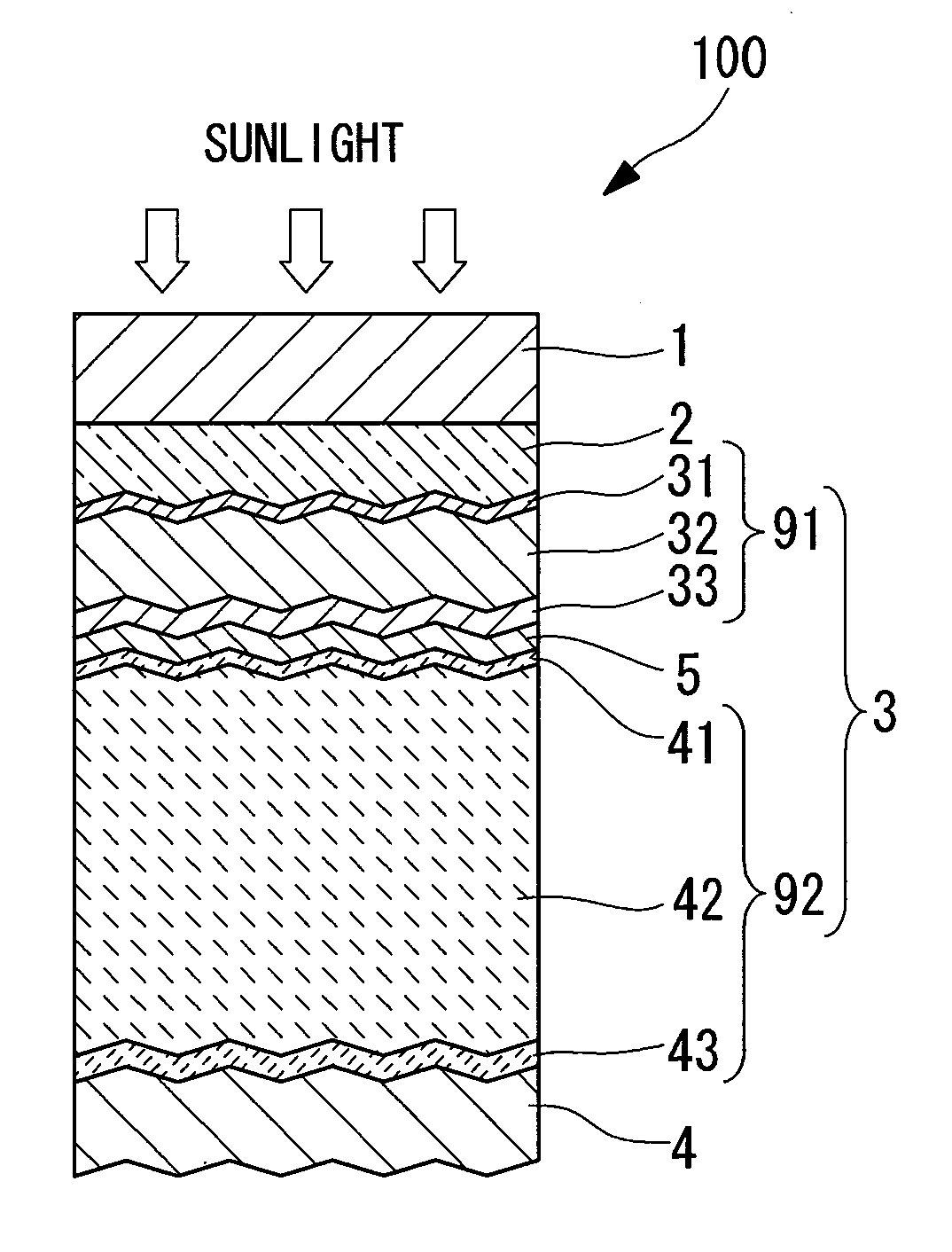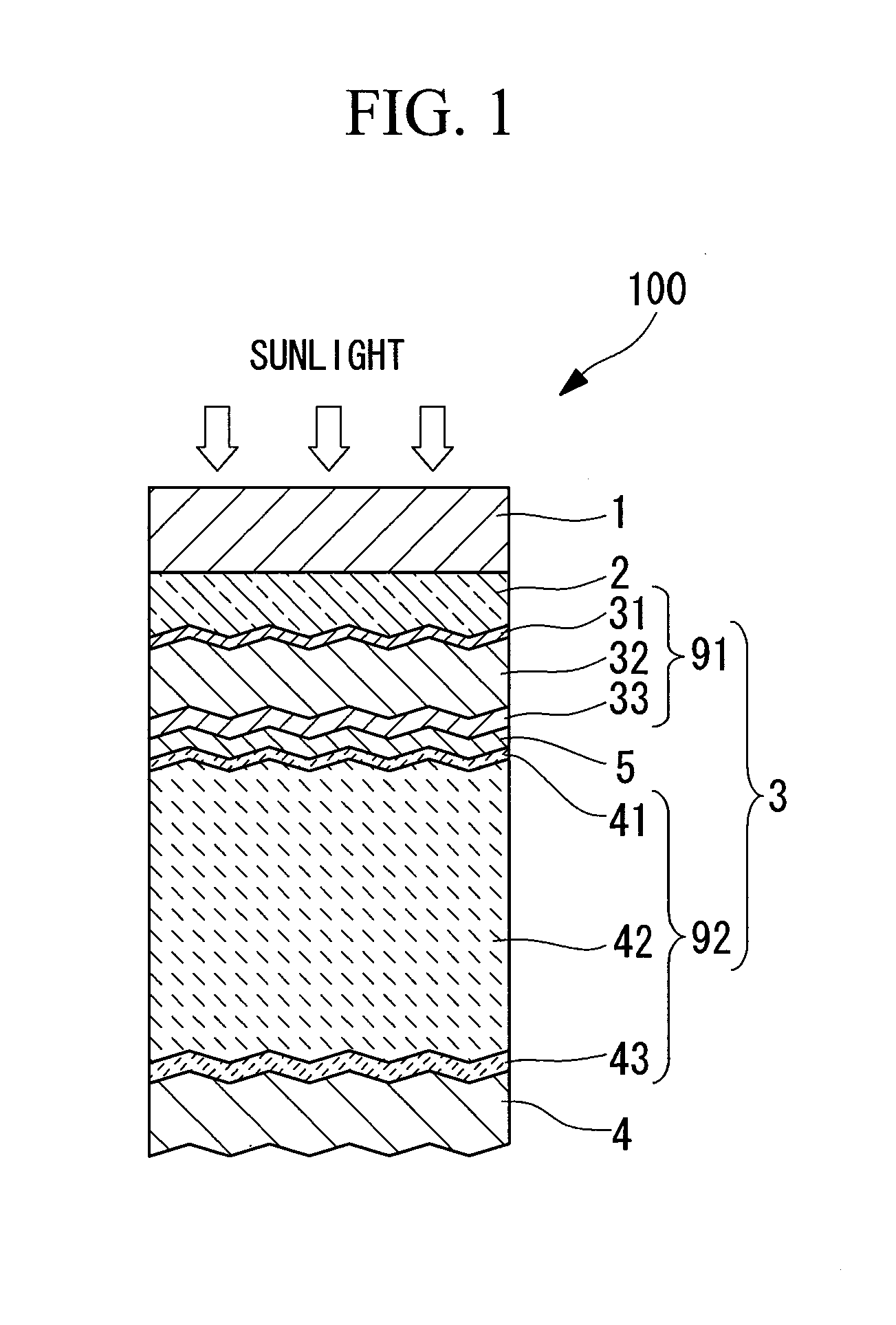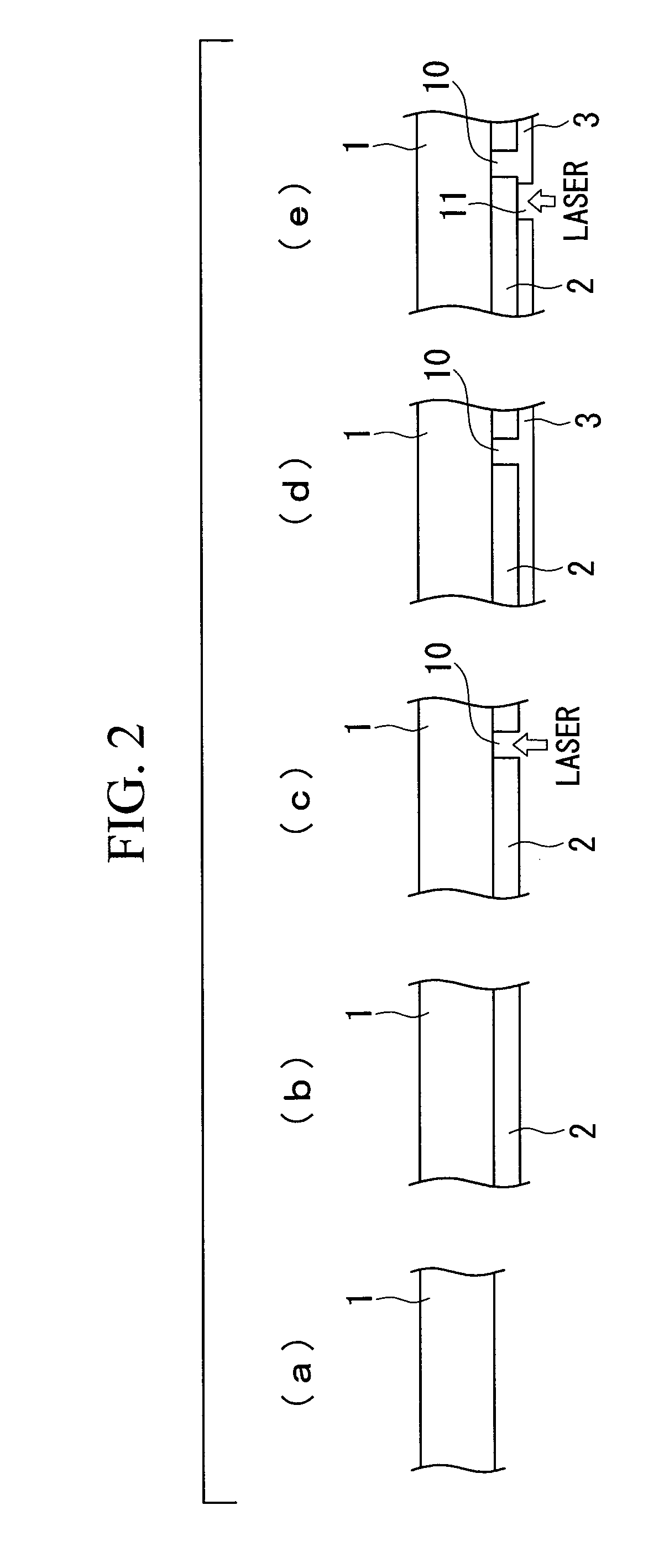Photoelectric conversion device
- Summary
- Abstract
- Description
- Claims
- Application Information
AI Technical Summary
Benefits of technology
Problems solved by technology
Method used
Image
Examples
first embodiment
[0034]A method for fabricating a photoelectric conversion device according to a first embodiment will be described by using, as an example, the steps for fabricating a solar cell panel. FIGS. 2 to 5 are views showing, in outline, a method for fabricating a solar cell panel of this embodiment.
(1) FIG. 2(a)
[0035]As the substrate 1, a soda float glass substrate (with a substrate area of 1 m square or more, for example, 1.4 m×1.1 m×plate thickness: 3.5 mm to 4.5 mm) is used. It is preferable that end faces of the substrate be subjected to a corner chamfering process or an R-chamfering process in order to avoid damage caused by thermal stress, impacts, or the like.
(2) FIG. 2(b)
[0036]As the transparent electrode layer 2, a transparent electrode film composed mainly of tin oxide (SnO2) and having a film thickness of about 500 nm to 800 nm, inclusive, is formed at about 500° C. using a thermal CVD apparatus. At this time, a suitable uneven texture is formed on the surface of the transparent...
second embodiment
[0064]A photoelectric conversion device according to a second embodiment includes an interfacial layer between the first power generation cell layer 91 and the intermediate contact layer 5, shown in FIG. 1.
[0065]The interfacial layer mainly contains ZnO or a compound represented by Zn1-xMgxO(where 01-xMgxO used as the interfacial layer may contain Ga2O3 as a dopant.
[0066]The interfacial layer may be formed in a film-forming chamber different from or identical to that is used to form the intermediate contact layer.
[0067]When the interfacial layer and the intermediate contact layer are formed in different film-forming chambers, the interfacial layer and the intermediate contact layer are formed by the following steps.
[0068]The interfacial layer is formed, using an RF magnetron sputtering apparatus, under the following conditions: a Ga2O3-doped ZnO sintered compact or a Ga2O3-doped ZnO—MgO mixture target (MgO ratio: 0 to 5 mass %, excluding 0 mass %), an RF power of 1.1 to 4.4 W / cm2, a...
example 1
[0073]A tandem solar cell module having the structure shown in FIG. 1 was formed on a glass substrate (5 cm square). Note that the film thickness of the i-layer of the first power generation cell layer was 250 nm, and the film thickness of the i-layer of the second power generation cell layer was 1.9 μm.
[0074]The intermediate contact layer was formed under the following conditions: a ZnO sintered compact target (Ga2O3 dopant) or a ZnO—MgO mixture target (Ga2O3 dopant, MgO mass ratio: 5 to 12.5%), a substrate temperature of 25° C., an RF power of 4.4 W / cm2, a target-to-substrate distance of 90 mm, a film-formation speed of 0.17 nm / s, and a film thickness of 70 nm.
[0075]FIG. 7 shows the relationship between the MgO content in the intermediate contact layer and the module form factor. In the figure, the horizontal axis shows the MgO content, and the vertical axis shows the module form factor normalized by a value when the MgO content was 0%. FIG. 8 shows the relationship between the Mg...
PUM
| Property | Measurement | Unit |
|---|---|---|
| Thickness | aaaaa | aaaaa |
| Thickness | aaaaa | aaaaa |
| Electrical resistance | aaaaa | aaaaa |
Abstract
Description
Claims
Application Information
 Login to View More
Login to View More - R&D
- Intellectual Property
- Life Sciences
- Materials
- Tech Scout
- Unparalleled Data Quality
- Higher Quality Content
- 60% Fewer Hallucinations
Browse by: Latest US Patents, China's latest patents, Technical Efficacy Thesaurus, Application Domain, Technology Topic, Popular Technical Reports.
© 2025 PatSnap. All rights reserved.Legal|Privacy policy|Modern Slavery Act Transparency Statement|Sitemap|About US| Contact US: help@patsnap.com



